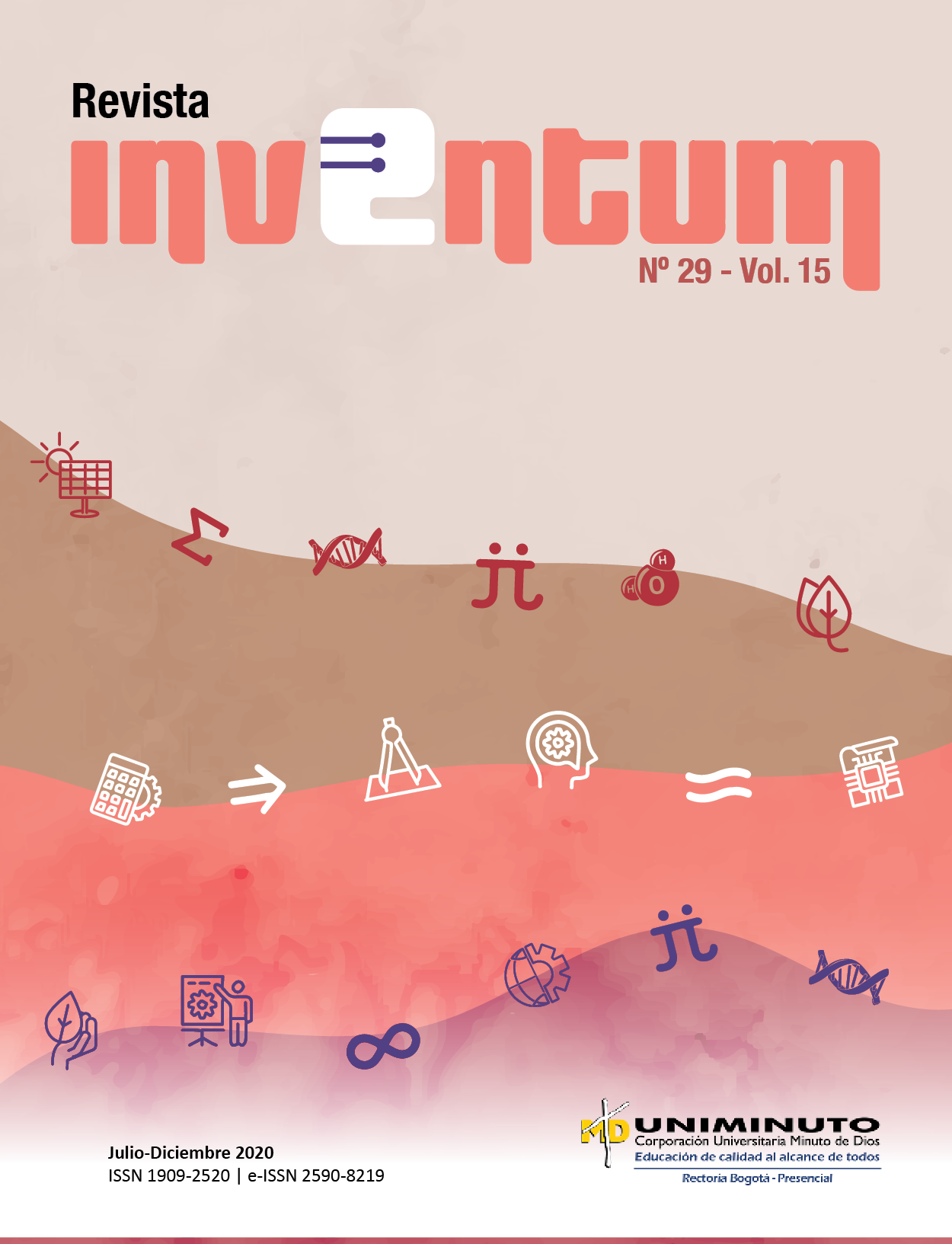Estudio exploratorio de medición de material particulado respirable en biciusuarios de Engativá, Bogotá
Barra lateral del artículo
Cómo citar
Altmetrics
Detalles del artículo
Se solicita a los autores que diligencien el documento de cesión de derechos de autor sobre el artículo, para que sea posible su edición, publicación y distribución en cualquier medio y modalidad: medios electrónicos, CD ROM, impresos o cualquier otra forma, con fines exclusivamente científicos, educativos y culturales
- La obra pertenece a UNIMINUTO.
- Dada la naturaleza de UNIMINUTO como Institución de Educación Superior, con un modelo universitario innovador para ofrecer Educación de alta calidad, de fácil acceso, integral y flexible; para formar profesionales altamente competentes, éticamente responsables y líderes de procesos de transformación social, EL CEDENTE ha decidido ceder los derechos patrimoniales de su OBRA, que adelante se detalla para que sea explotado por ésta
- El querer de EL CEDENTE es ceder a título gratuito los derechos patrimoniales de la OBRA a UNIMINUTO con fines académicos.
Contenido principal del artículo
Resumen
En Bogotá se realizan aproximadamente 900.000 viajes en bicicleta a diario, siendo este un medio de movilidad sostenible y amigable con el ambiente. Los usuarios que utilizan este medio de transporte se exponen a una deficiente calidad del aire, que ha traído como consecuencia altos niveles de enfermedades respiratorias agudas, generadas por la exposición a elevadas dosis de material particulado que se encuentra suspendido en el aire. En la Universidad Libre sede Bosque Popular, aproximadamente 500 estudiantes, docentes y administrativos se movilizan en bicicleta, de los cuales un 60 % transitan por la ruta que va desde el barrio Bonanza, Avenida Medellín (calle 80), avenida Rojas, hasta la Universidad; lugar que no cuenta con una ciclorruta y por lo tanto los biciusuarios se encuentran expuestos a respirar más cantidades de este contaminante. El presente trabajo se centra en el análisis, modelado de los resultados obtenidos de la medición de material particulado respirable por los biciusuarios en su trayecto cotidiano en la ruta anteriormente mencionada y la comparación con los límites permisibles, lo que permite identificar los niveles de riesgo a los cuales ellos están expuestos. La complejidad de este experimento radica en el “ambiente” de toma de muestras, entendido este como las rutas de movilidad ya que son espacios abiertos donde existe una serie de aspectos no controlados en contraste con los muestreos de higiene en espacios laborales no rmales y la aplicación de un estudio de higiene industrial llevado al tema de movilidad en bicicleta, el cual no se ha realizado antes.
Referencias
Banco Interamericano de Desarrollo, 2015. [En línea]. Disponible en: https://publications.iadb.org/es/ciclo-inclusion-en-america-
latina-y-el-caribe-guia-para-impulsar-el-uso-de-la-bicicleta
[2] D. Duarte, K. López y S. Meneses, “Caracterización de riesgos en la accidentalidad de biciusuarios. Bogotá – Engativá”, Revista de
Ingeniería Industrial. Actualidad y Nuevas Tendencias, vol. 6, n.° 21, pp. 93-108, 2018. [En línea]. Disponible en: http://servicio.bc.uc.edu.ve/ingenieria/revista/Inge-Industrial/vol6-n21/art06.pdf
[3] F. Matt, T. Cole-Hunter, D. Donaire-González, N. Kubesch, D. Martínez, G. Carrasco-Turigas and M. Nieuwenhuijsen. “Acute respiratory response to traffic-related air pollution during physical activity performance”, Environ Int., vol. 97, pp. 45-55, 2016. [On line].
Available: https://doi.org/10.1016/j.envint.2016.10.011
[4] A. de Nazelle, S. Fruin, D. Westerdahl, D. Martinez, A. Ripoll, N. Kubesch and M. Nieuwenhuijsen, “A travel mode comparison
of commuters’ exposures to air pollutants in Barcelona”, Atmos Environ, vol. 59, pp. 151-159, 2012. [On line]. Available: https://doi.org/10.1016/j.atmosenv.2012.05.013
[5] Organización Mundial de la Salud, (2018). “Calidad del aire y salud”. [En línea]. Disponible en: https://www.who.int/es/newsroom/
fact-sheets/detail/ambient-(outdoor)-air-quality-and-health
[6] A. Thai, I. McKendry and M. Brauer, “Particulate matter exposure along designated bicycle routes in Vancouver, British Columbia”,
Sci Total Environ, vol. 405, n°. 1-3, pp. 26-35, 2008. [On line]. Available: https://doi.org/10.1016/j.scitotenv.2008.06.035
[7] M. Montoya-Rendón, P. Zapata-Saldarriaga y M. Correa-Ochoa, “Contaminación ambiental por PM10 dentro y fuera del domicilio y
capacidad respiratoria en Puerto Nare, Colombia”, Revista de Salud Pública, vol. 15, n°. 1, pp. 103-115, 2013. [En línea]. Disponible
en: http://dx.doi.org/10.15446/rsap
[8] Z. Zlatev, K. Georgiev and I. Dimov, “Influence of climatic changes on pollution levels in the Balkan Peninsula”. Comput Math with
Appl, vol. 65, n°. 3, pp. 544-562, 2013. [On line]. Available: https://doi.org/10.1016/j.camwa.2012.07.006
[9] S. Kingham, I. Longley, J. Salmond, W. Pattinson and K. Shrestha, “Variations in exposure to traffic pollution while travelling by different modes in a low density, less congested city”, Environ Pollut, vol. 181, pp. 211-218, 2013. [On line]. Available en: https://doi.org/10.1016/j.envpol.2013.06.030
[10] JF. Franco, “Urban Air Pollution in Bogota, Colombia: An Environmental Justice Perspective”, en 105th Air and Waste Management
Association Annual Conference and Exhibition, San Antonio, Texas, USA, june 2012. [Online]. Available: https://www.researchgate.net/publication/311327866_Urban_Air_Pollution_in_Bogota_Colombia_an_Environmental_Justice_Perspective
[11] OA. Fajardo, NY. Rojas, “Particulate matter exposure of bicycle pathusers in a high-altitude city”, Atmos Environ, vol. 46, pp. 675-
679, 2012. [On line]. Available: https://doi.org/10.1016/j.atmosenv.2011.09.047
[12] NIOSH, “Particulates not Otherwise Regulated, Respirable 0600” en Manual of Analytical Methods (NMAM), Fourth Edition.
[13] G. Sánchez, Datos del proyecto. Universidad Libre, Bogotá, 2019.
[14] Icontec, Gestión del riesgo. Bogotá: Icontec, 016.
[15] Icontec, NTC-IEC/ISO 31010 Técnicas de Valoración de Riesgos, Bogotá: Icontec, 2016.
[16] H. Gutiérrez. (2009). “Cartas de control para variables - Control estadístico de calidad y seis sigma”. [Internet]. Disponible en: https://issuu.com/mkarina1/docs/3.3_cartas_de_control_para_variable.
[17] J. Marín, Estadística descriptiva y multivariante. [En línea]. Disponible en : http://halweb.uc3m.es/esp/Personal/personas/jmmarin/esp/AMult/tema2am.pdf





